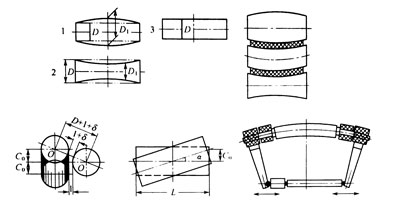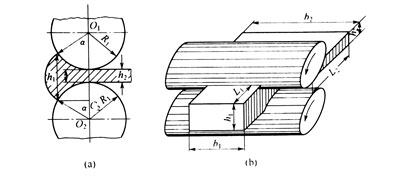It is known from the foregoing discussion that the flow rate of the rubber material passing through the calender roll is very fast. The degree of elastic deformation that occurs is also large. When the rubber leaves the roll gap, it will immediately produce elastic recovery to shrink the film longitudinally, and the thickness of …
Roller deflection and its compensation
The pressure delay is caused by the elastic bending deformation of the roller under the action of the transverse pressure of the rubber material, and the center of the roller axis is offset from the original horizontal position by a certain distance, which is called the deflection of the roller. The deflection causes the thickness …
Force state and flow velocity distribution of rubber compound on the roller
The pressure-delay compound is brought into the roll gap under the rotating friction of the surface of the roll, and is subjected to extrusion and shearing, and plastic flow deformation occurs. However, the position of the rubber on the roller is different, and the magnitude of the pressing force and the flow velocity distribution are …
The basic principle of rubber calendering 1
The calendering process is a process in which the rubber material undergoes plastic flow deformation under the pressing force of the calender roll. To master the law of the calendering process, it is necessary to understand the force state and flow deformation law of the pressure-delay rubber compound between the rolls, such as the condition …
What is the rubber calendering process
Calendering is one of the basic processes of rubber processing. Calendering is the use of the pressing force of the calender roll to cause plastic flow deformation of the rubber compound, the rubber material is made into a film having a certain section size and geometry, or the rubber material is attached to the surface …






